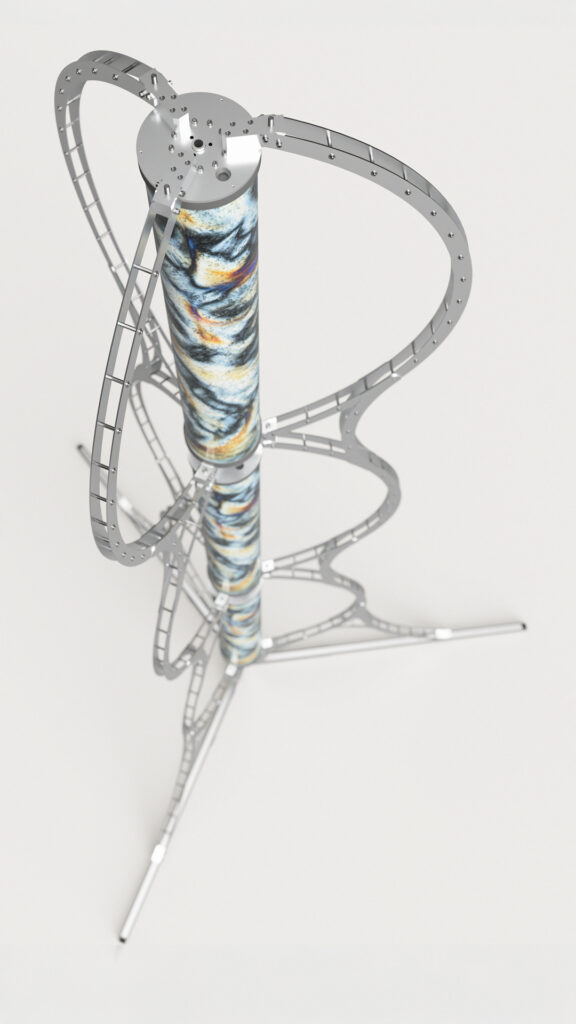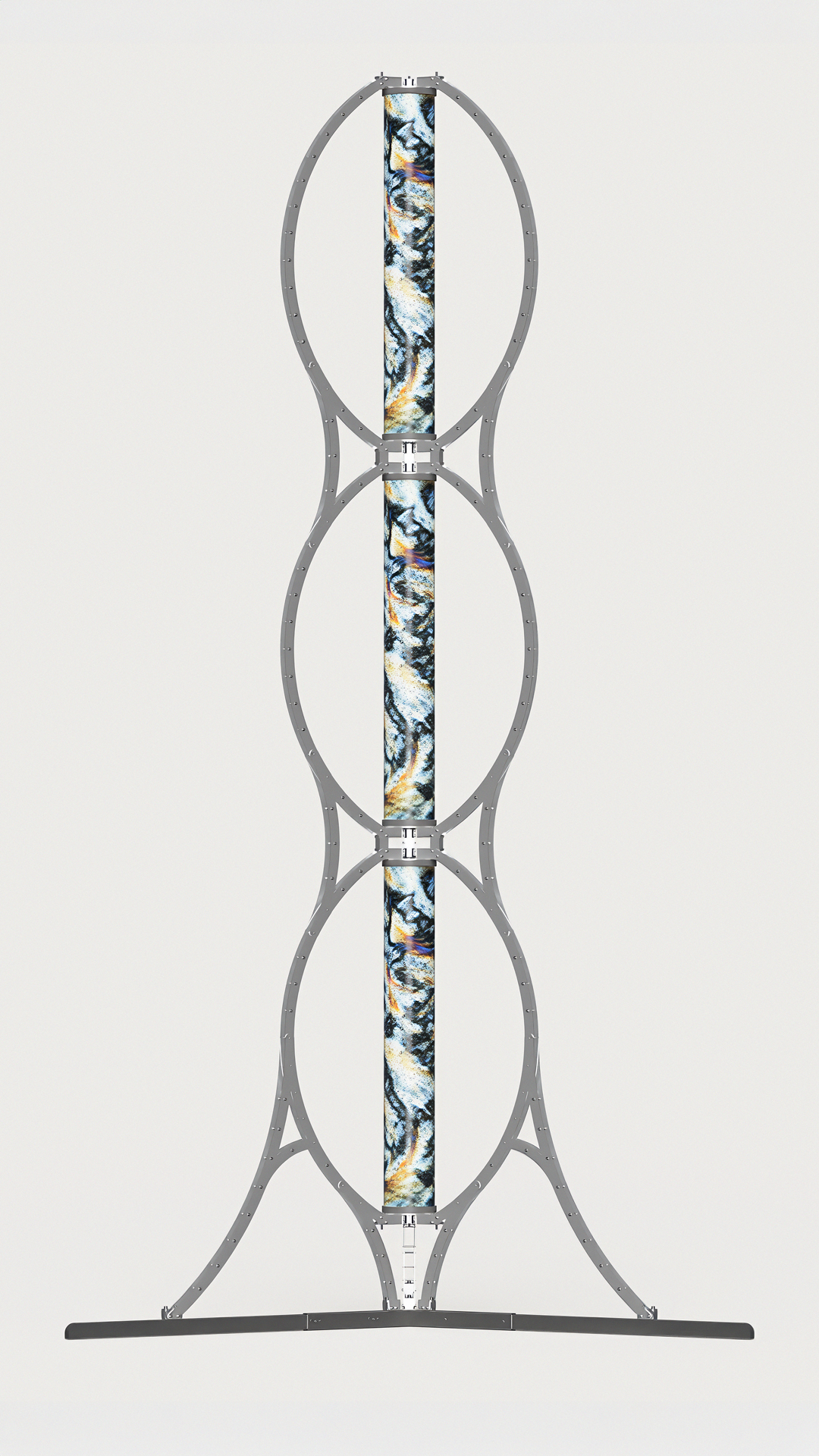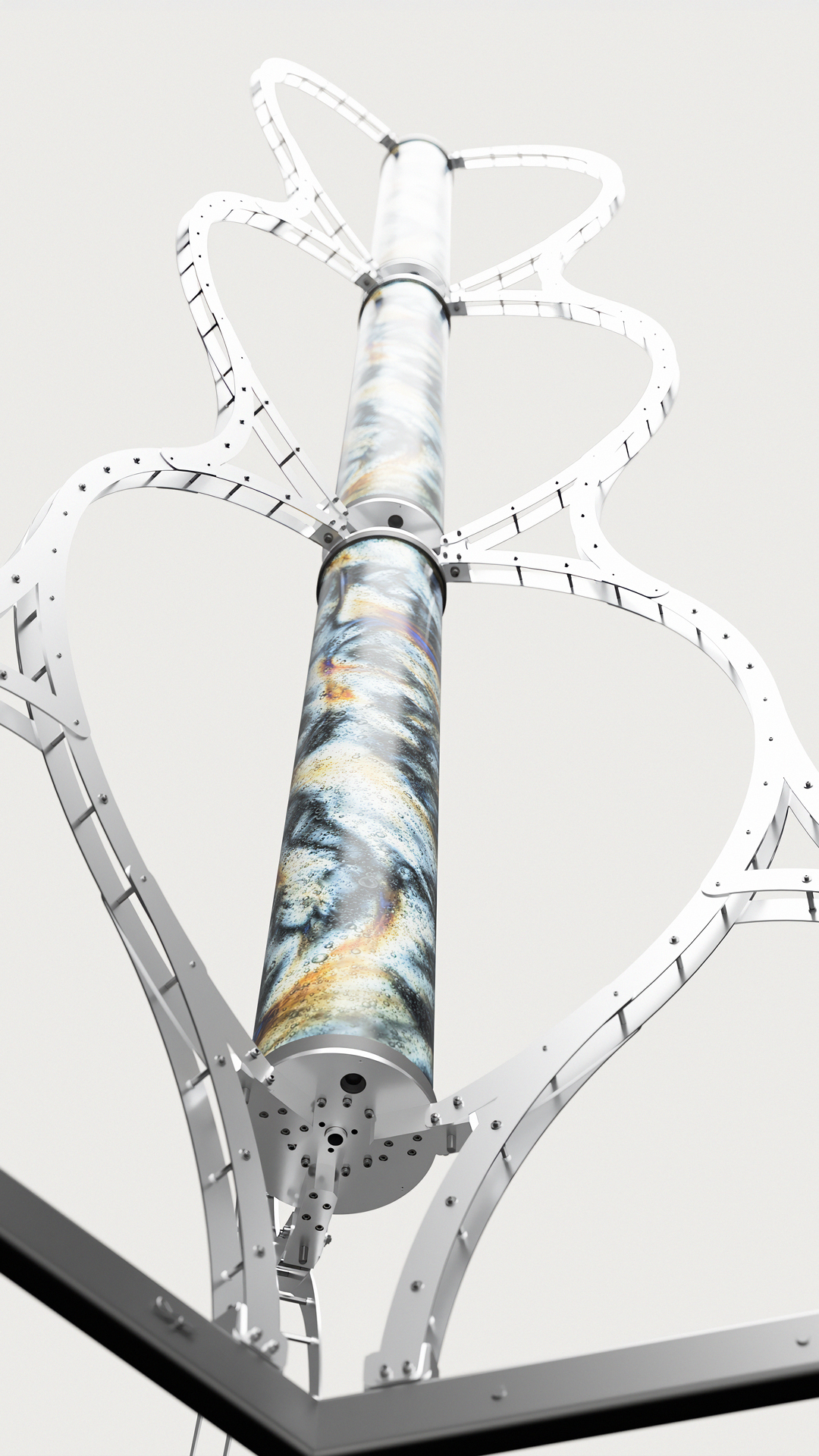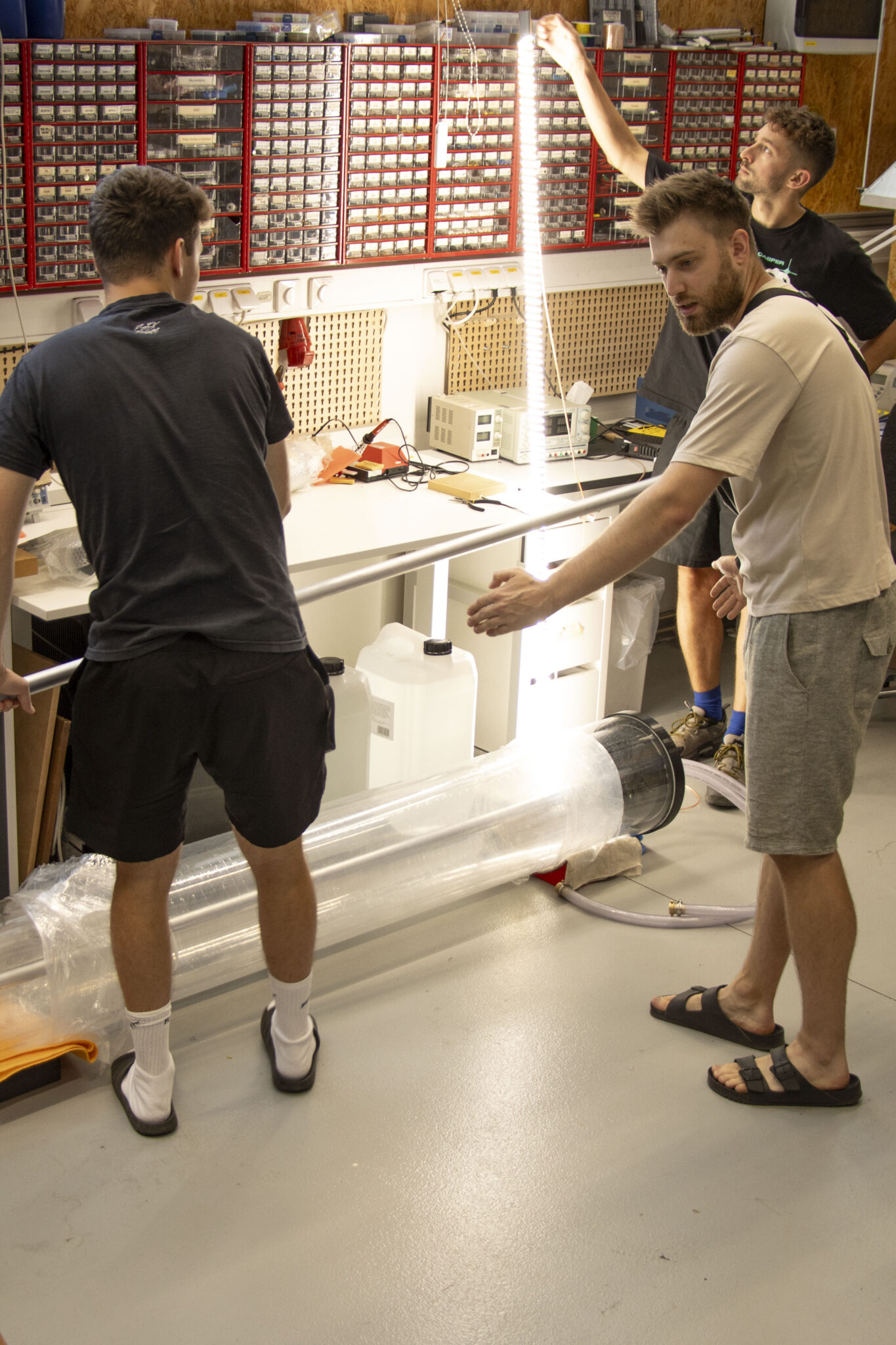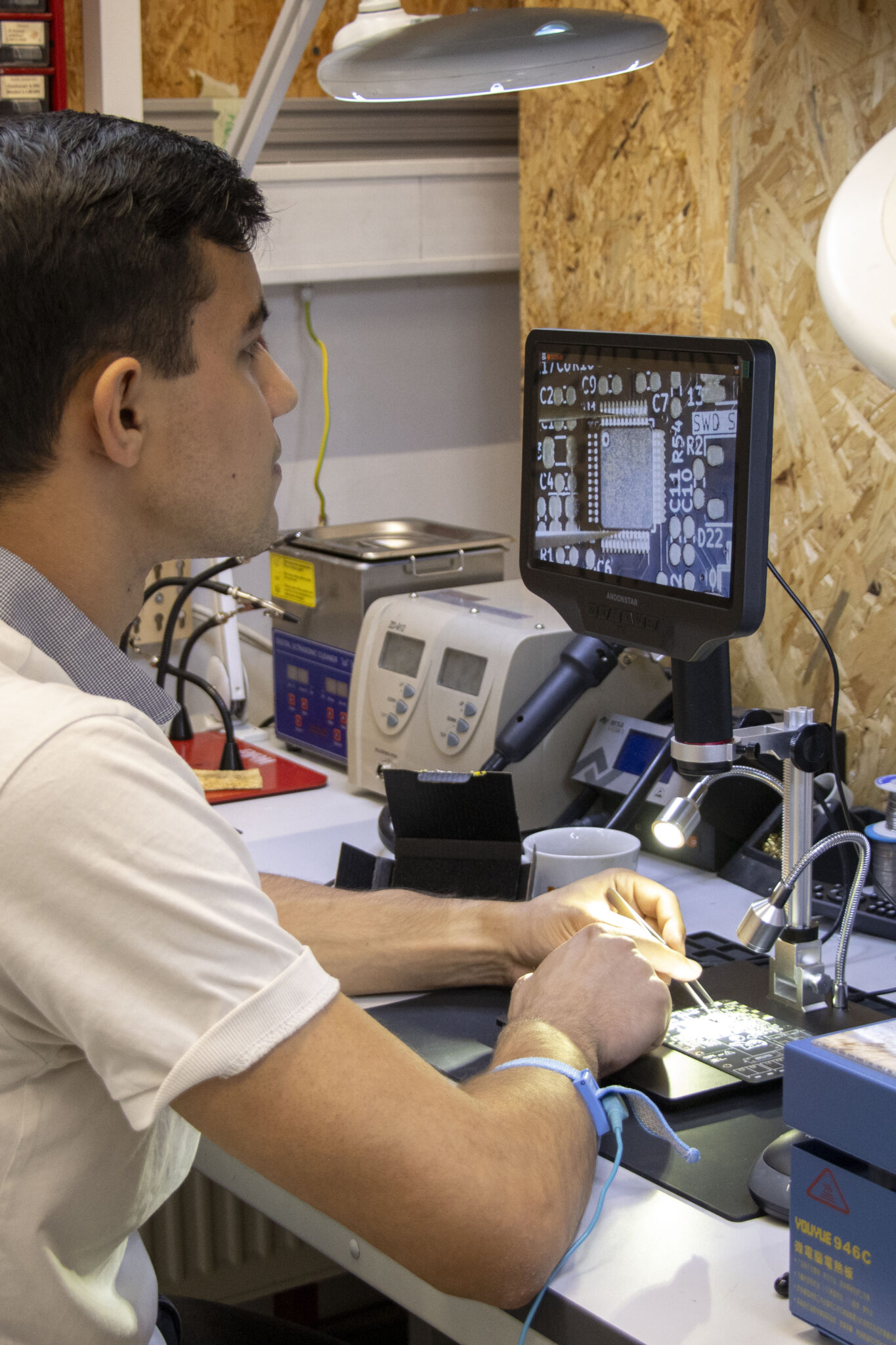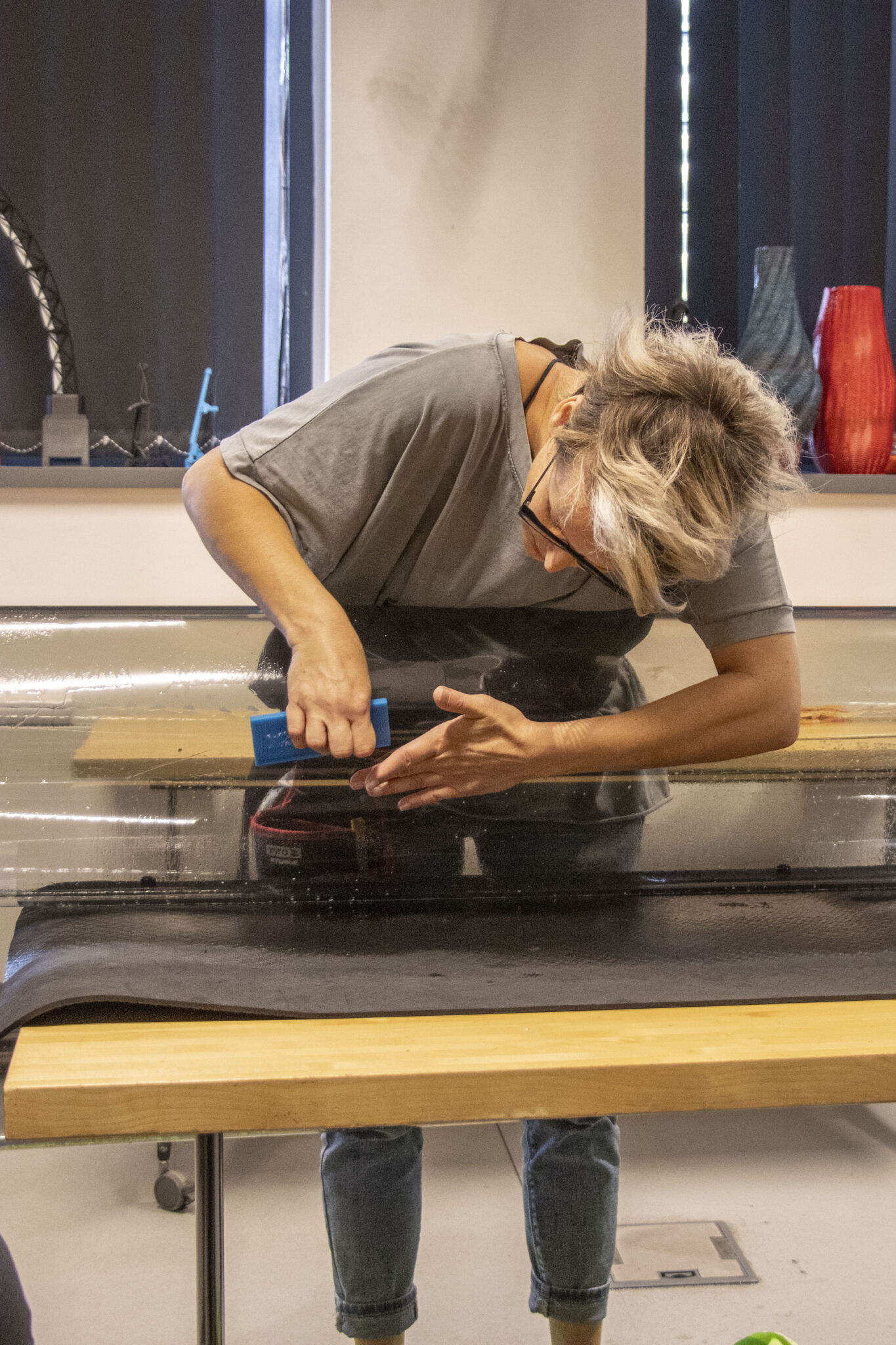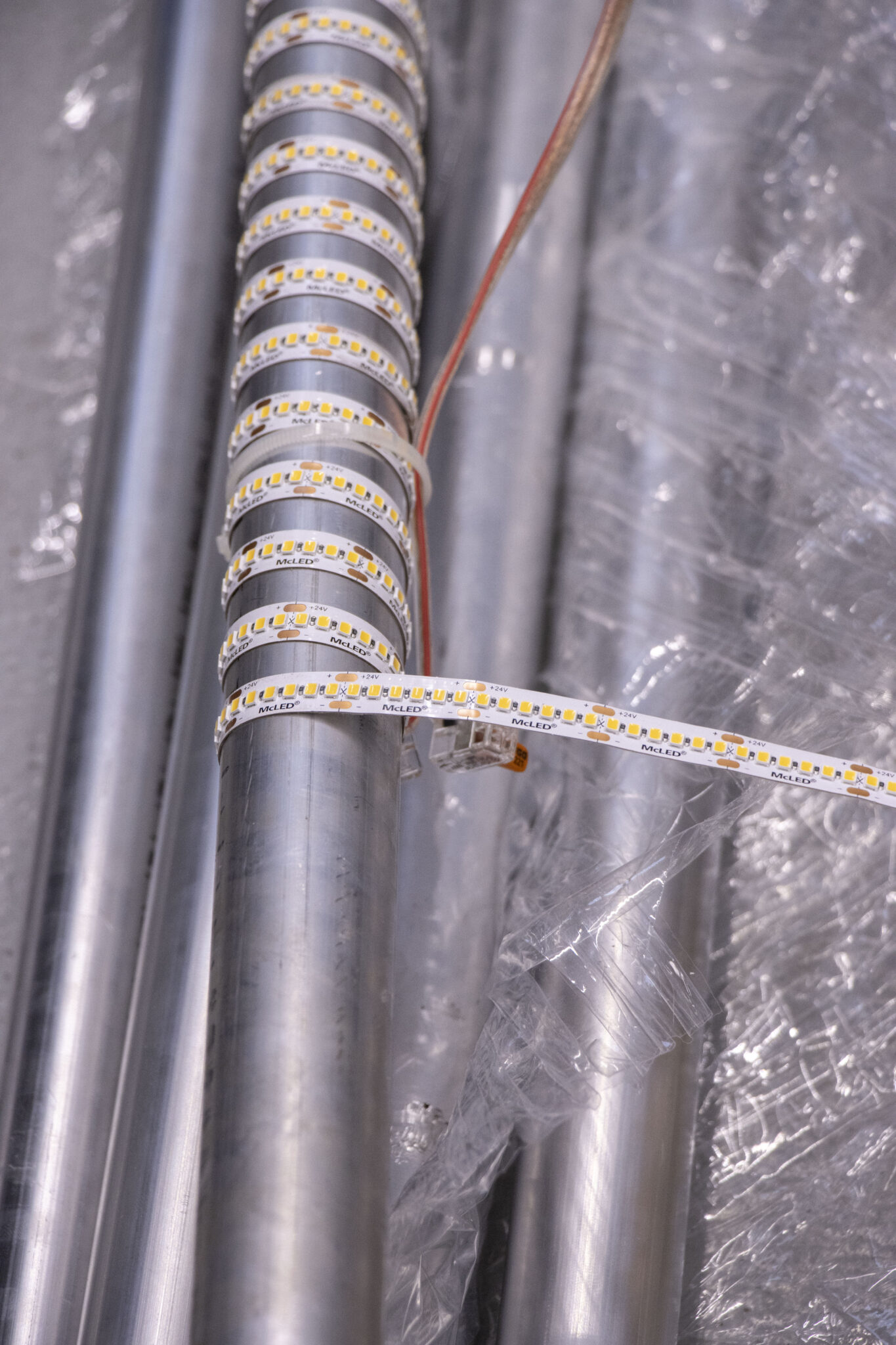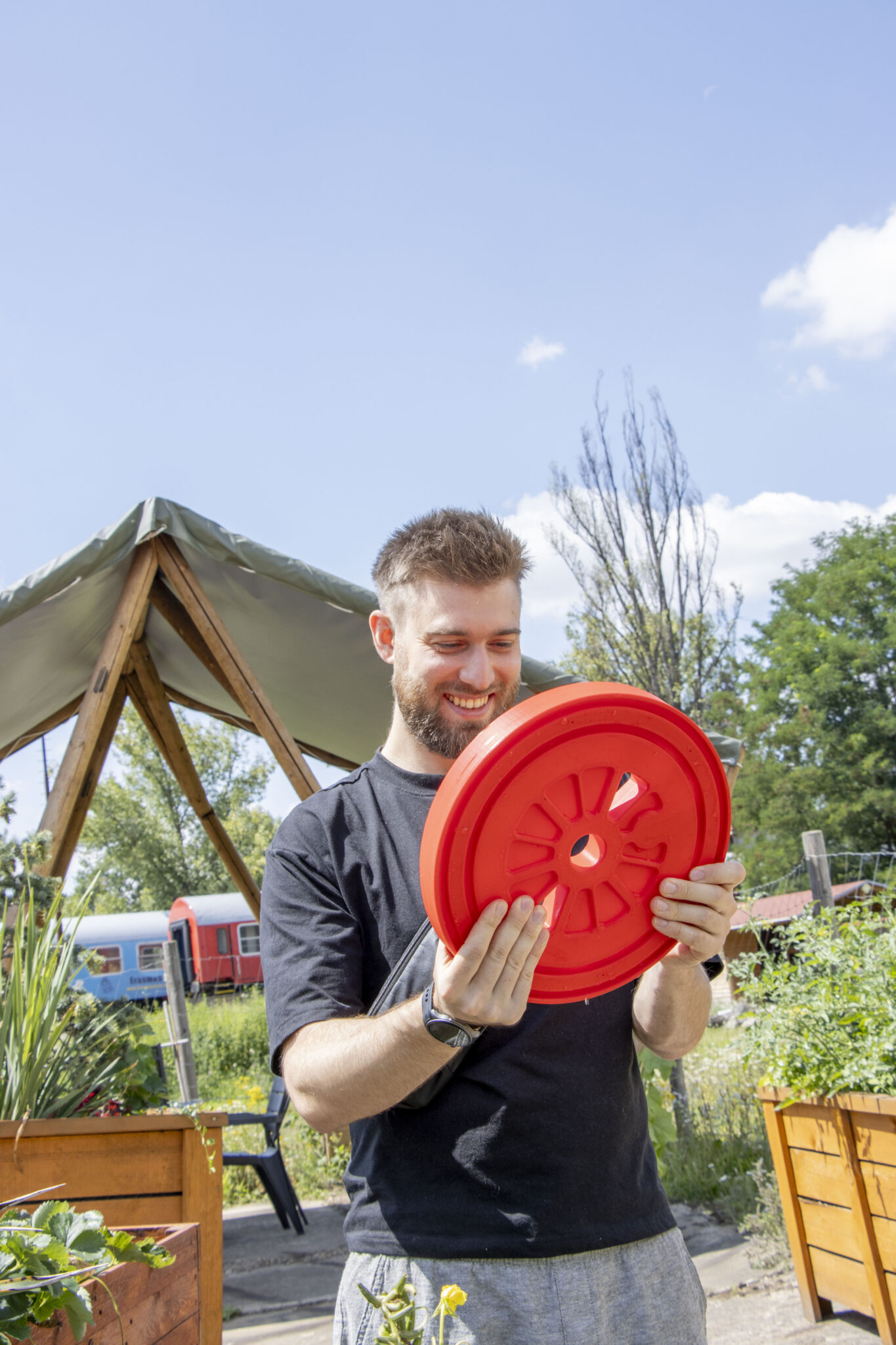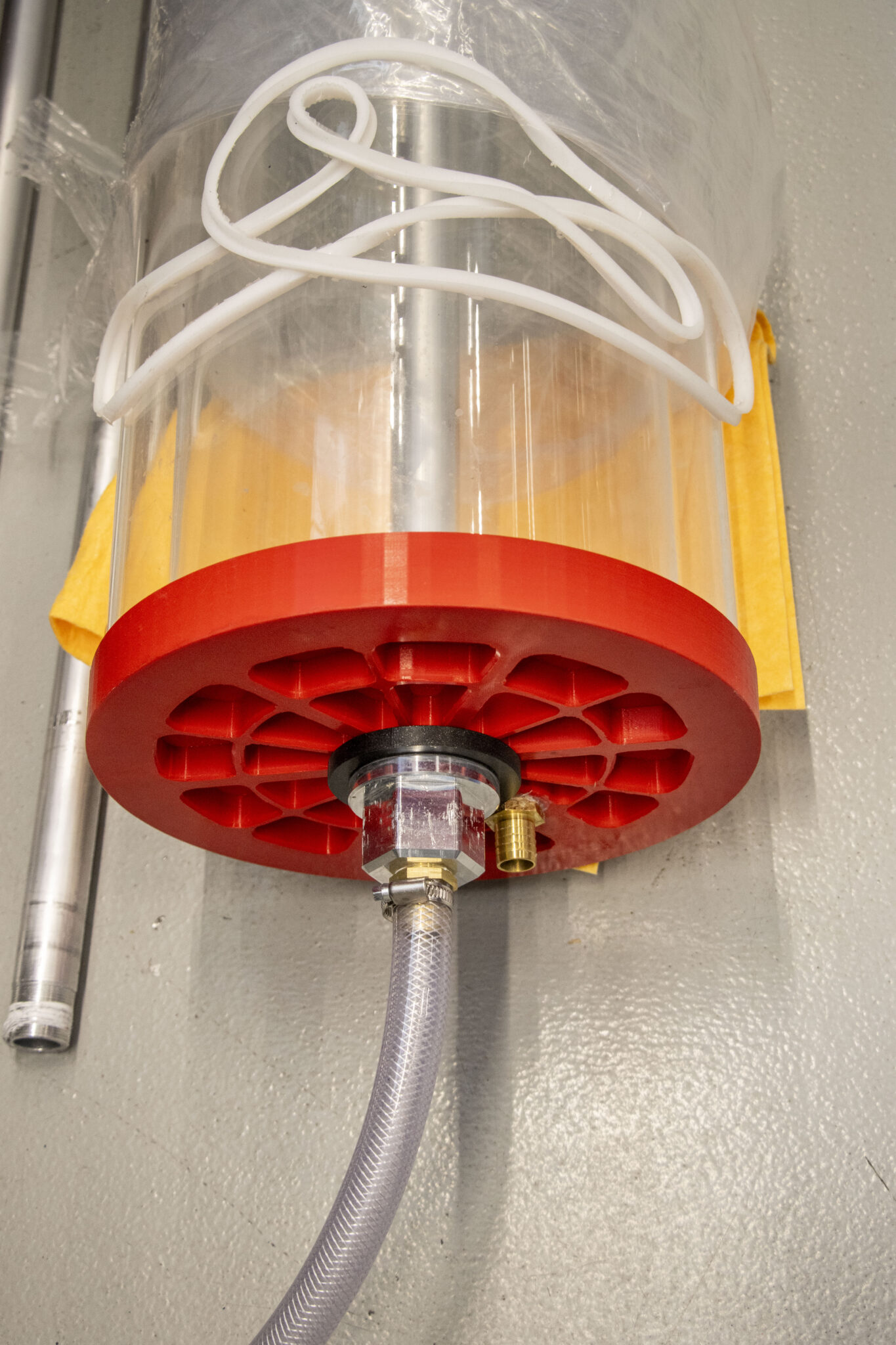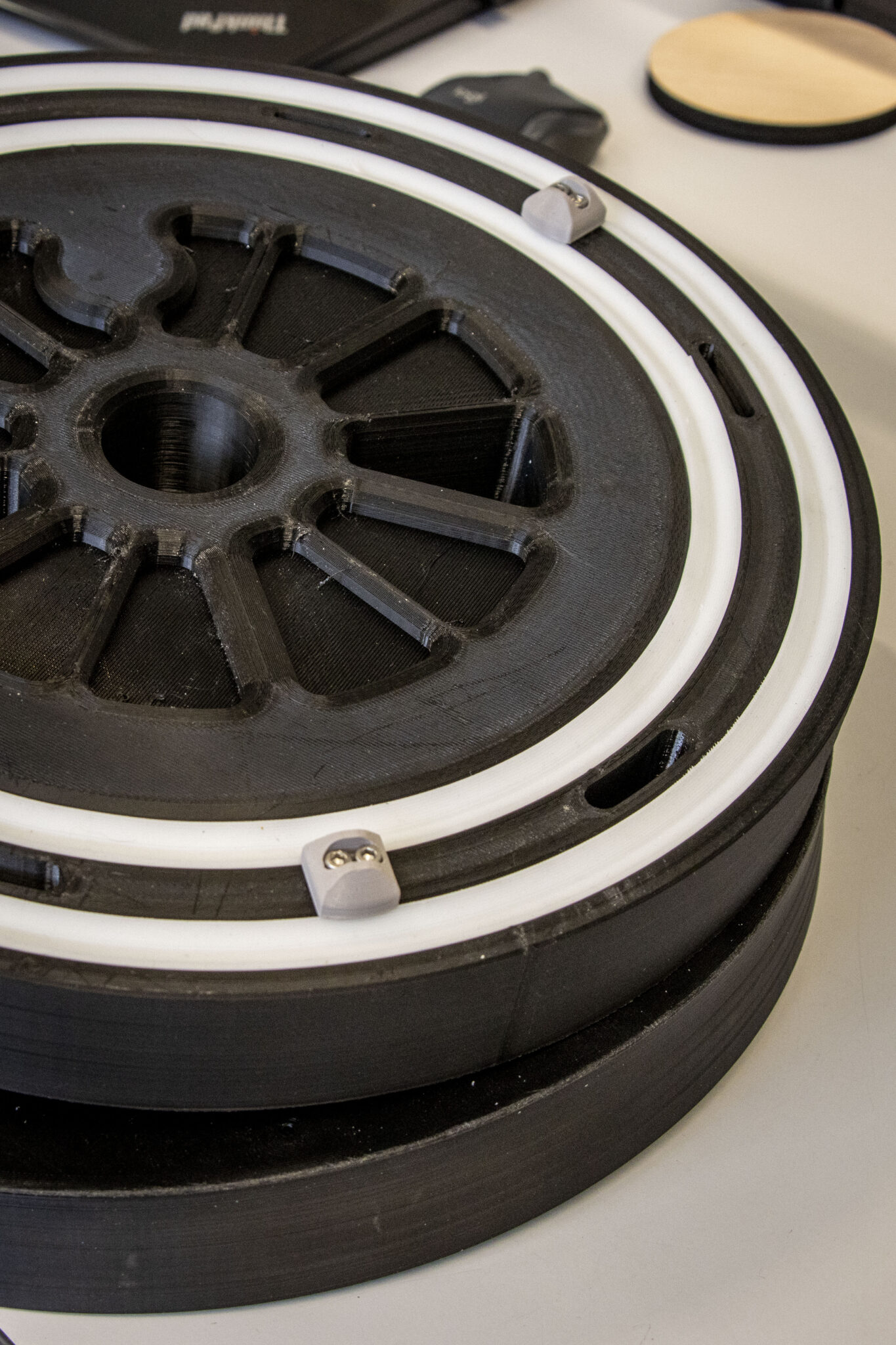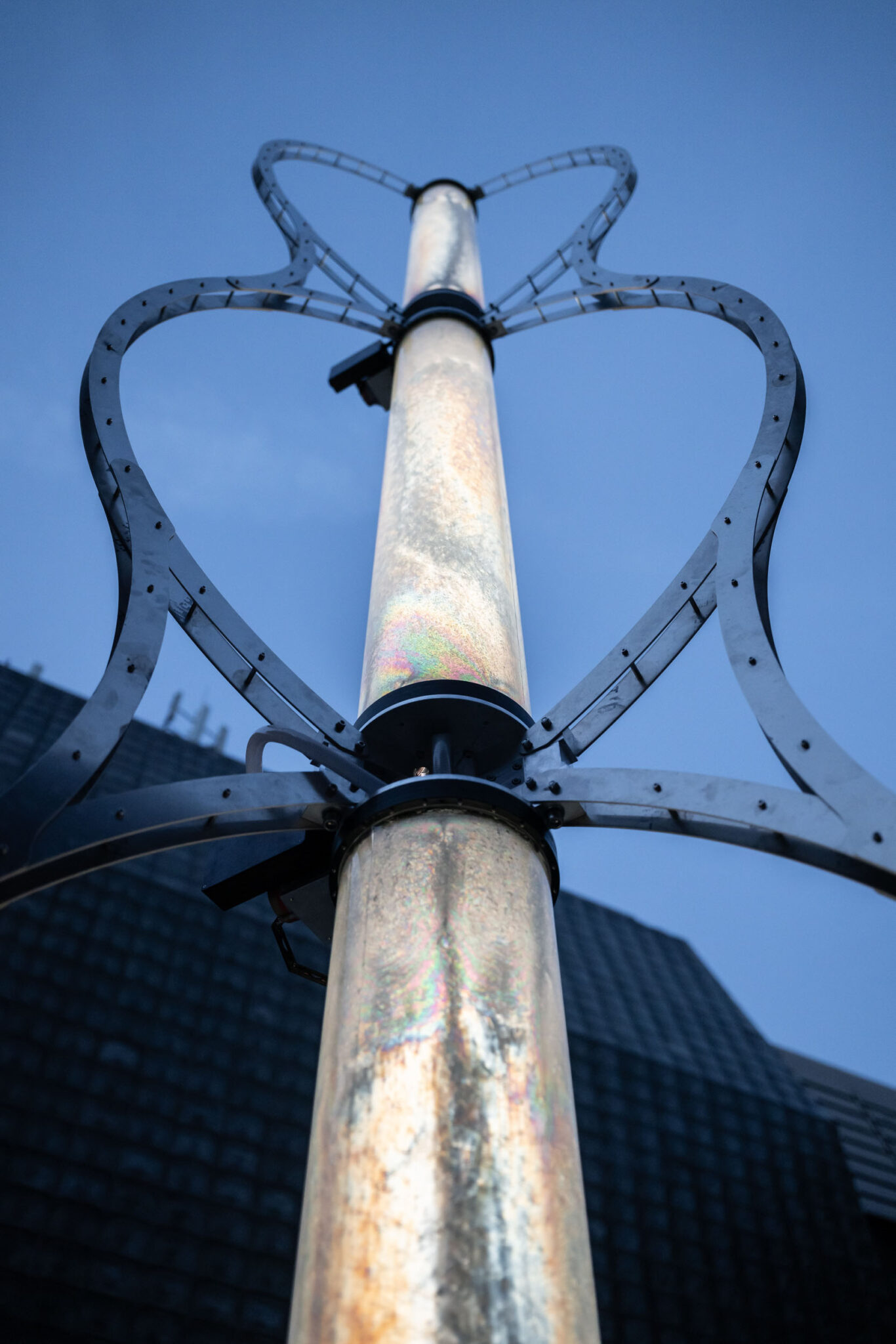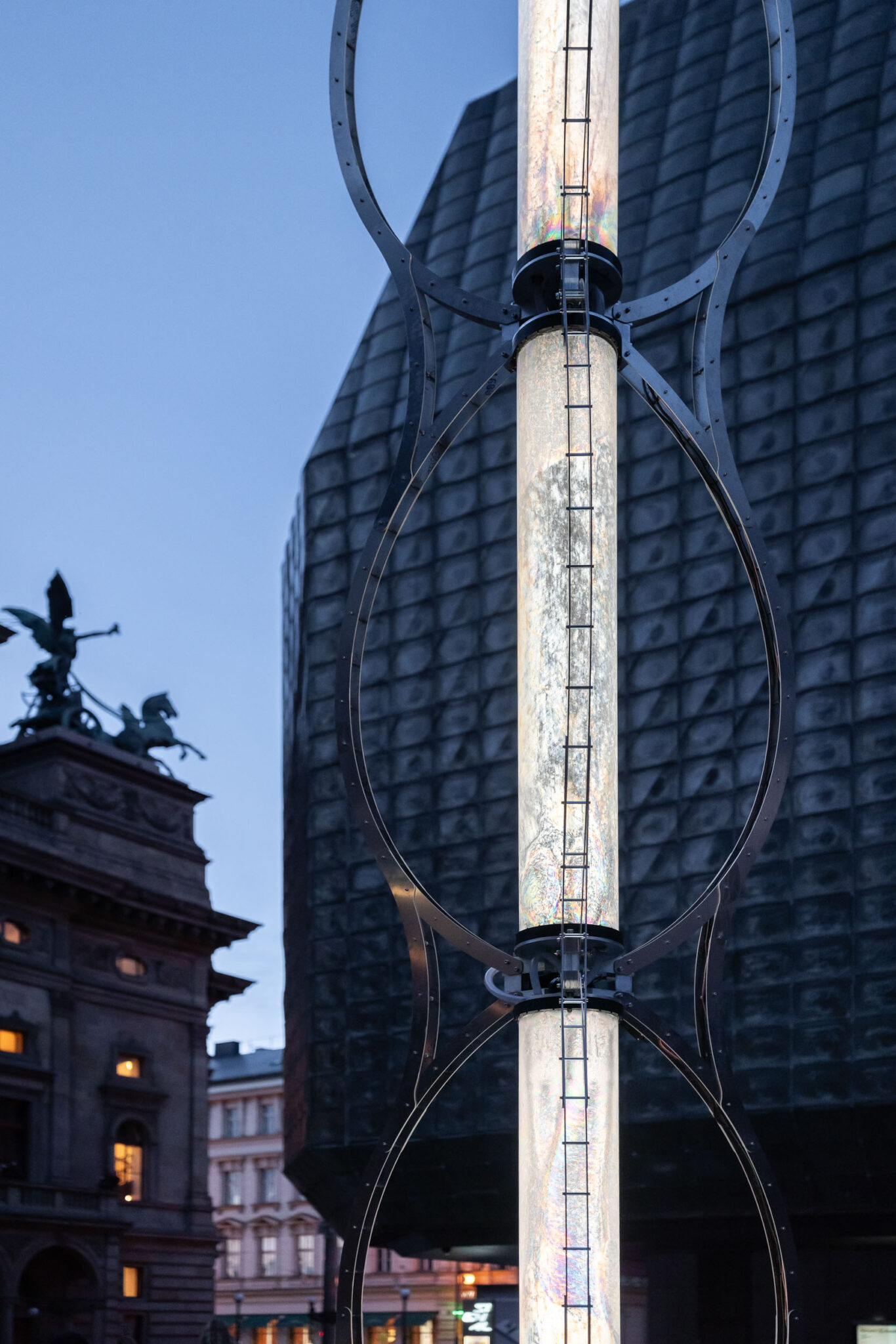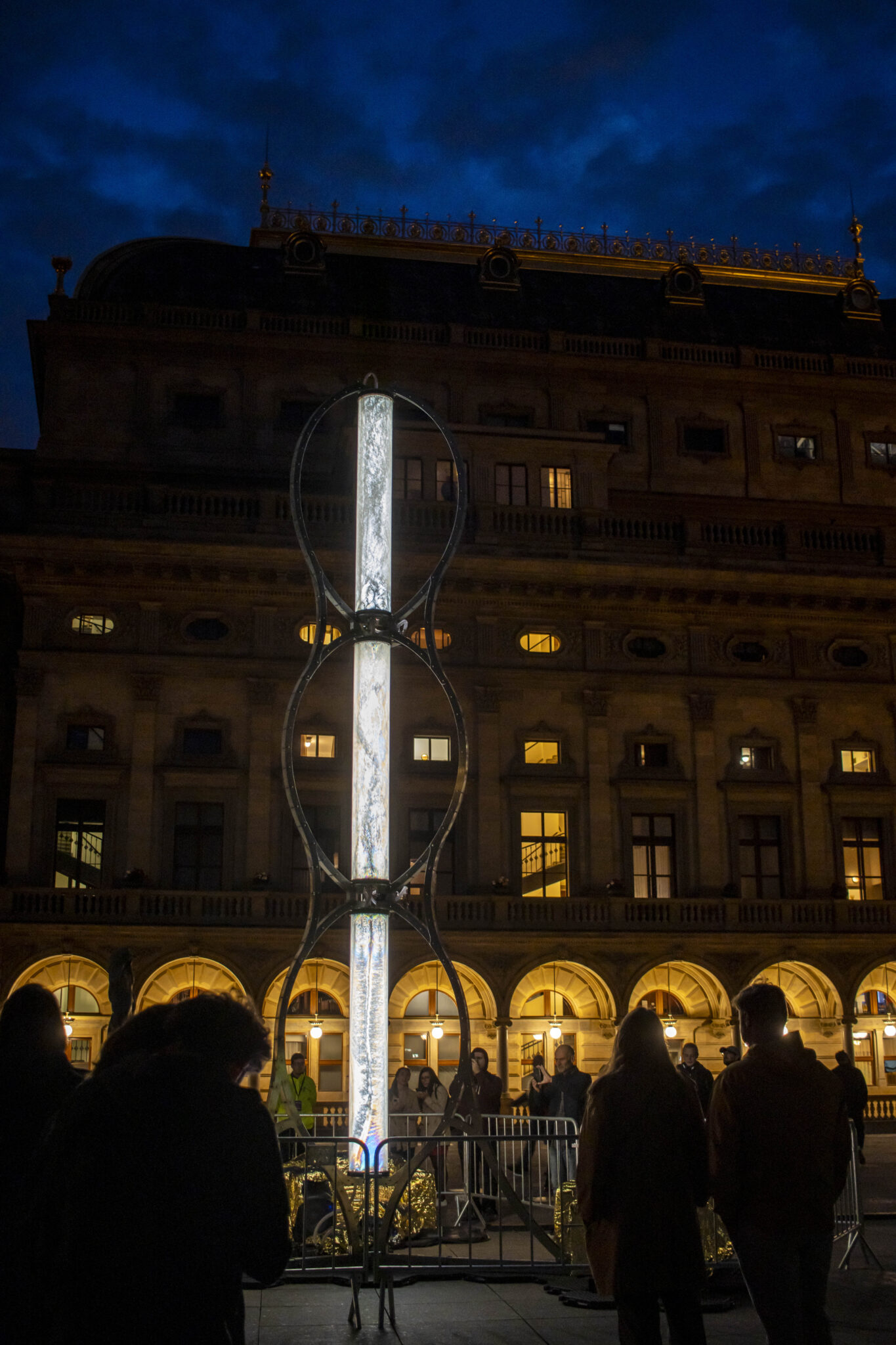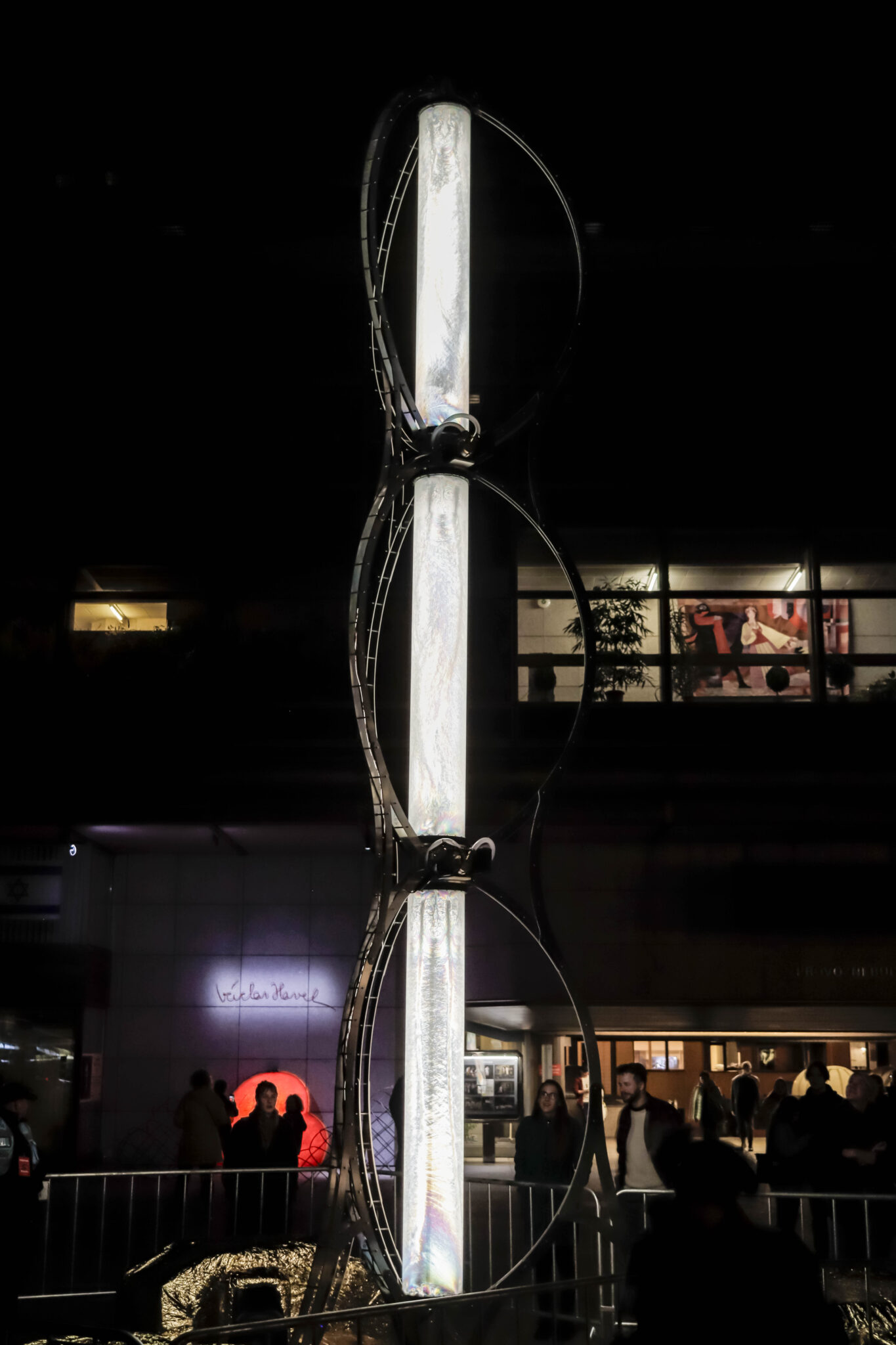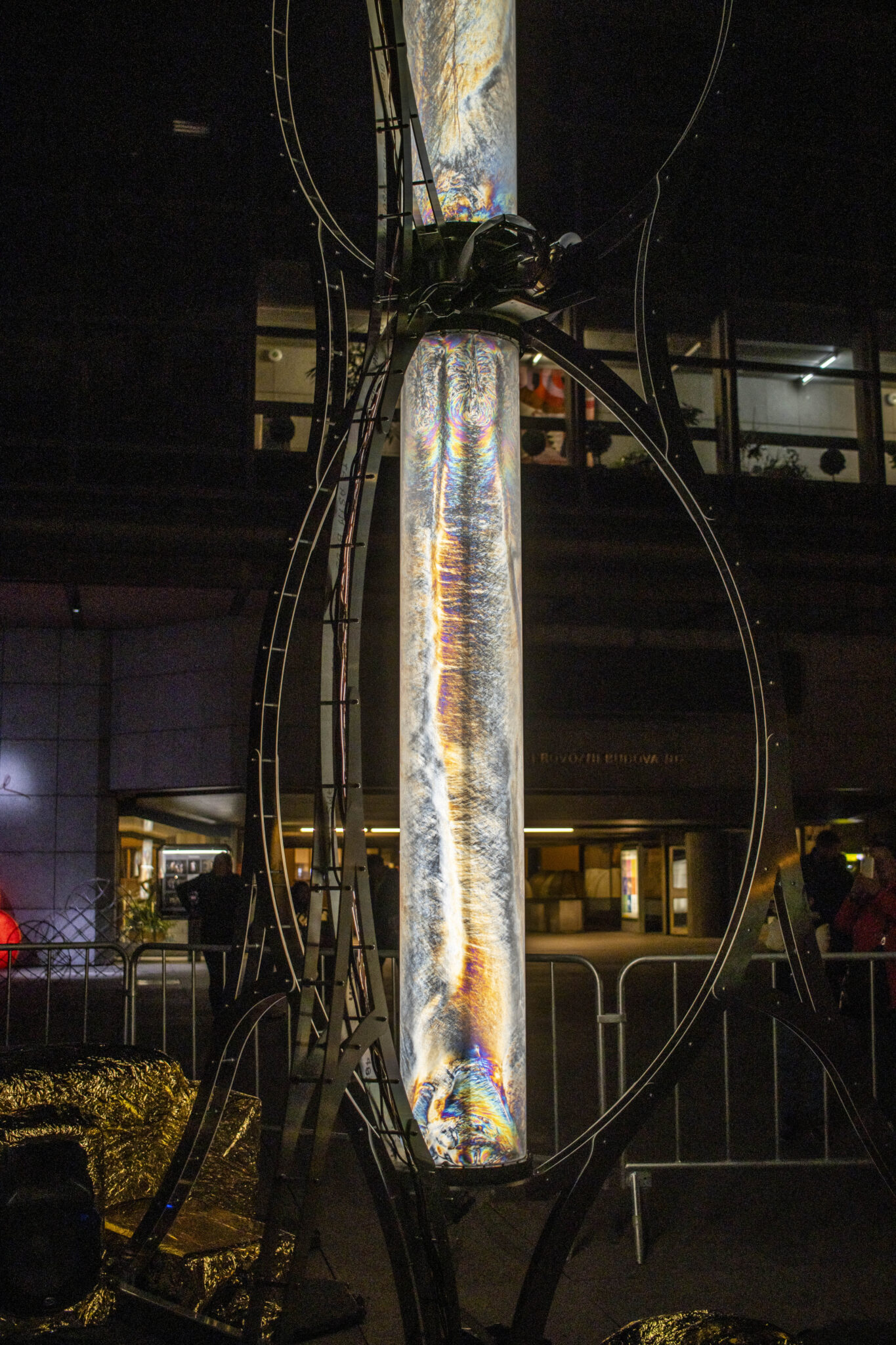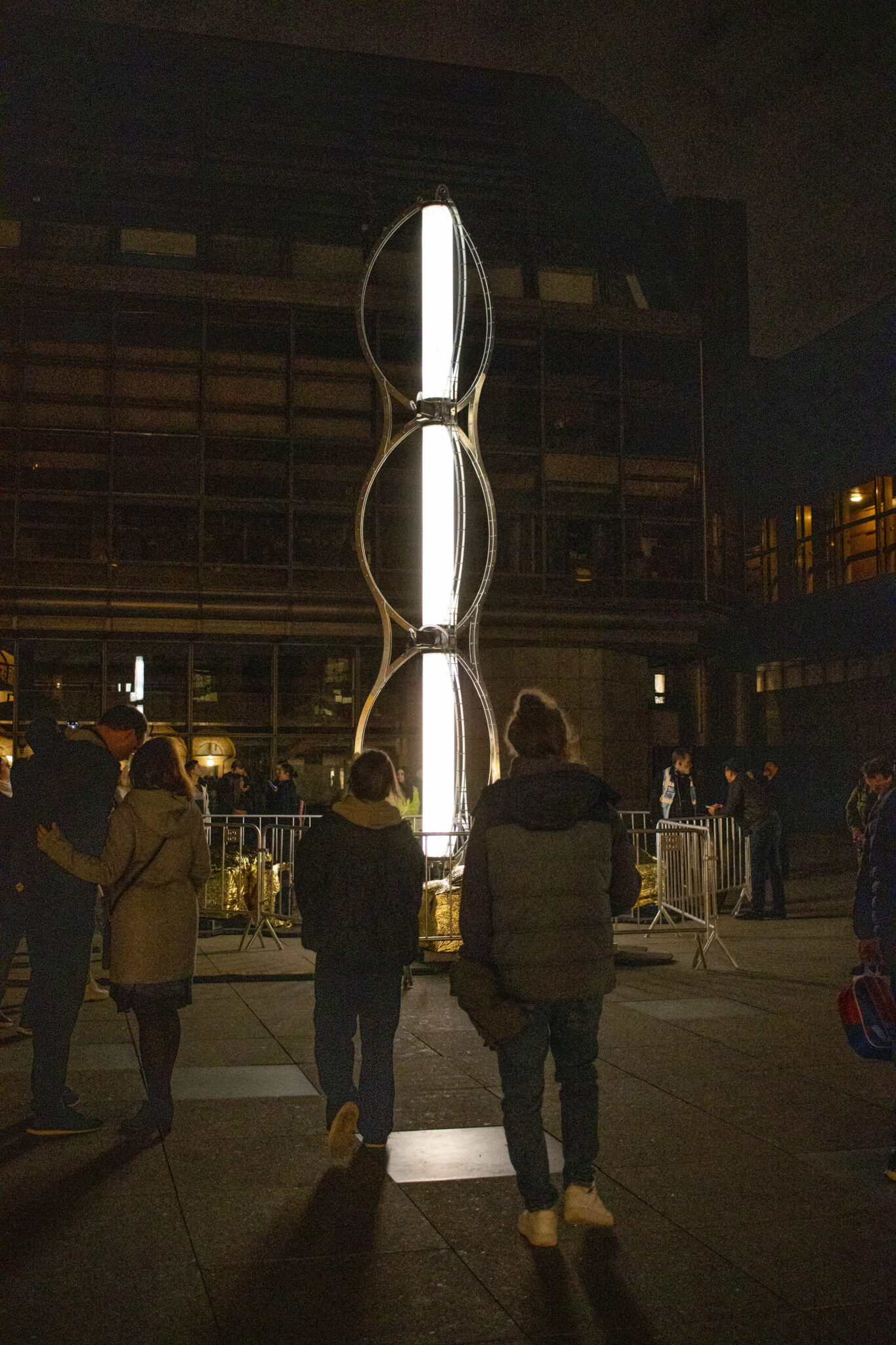How can we capture and visualize something the human eye cannot normally see? Audire Fluctus, an installation by artist Kryštof Brůha, transforms the invisible electromagnetic fields surrounding us into mesmerizing patterns of light and color. This artistic object, created for Signal Festival 2024 in collaboration with PrusaLab, became one of the festival’s most captivating highlights. But how was the project brought to life? What challenges had to be overcome? And what lies behind its unique technical solution?
A Data Totem That Makes the Invisible Visible
The seven-meter-tall “data totem” Audire Fluctus, designed by Kryštof Brůha, is a generative art installation that bridges modern technology with artistic vision. It translates invisible electromagnetic waves into a visually striking sensory experience. The installation was developed in response to an open call Signal Calling as part of Signal Festival 2024, which aims to bring innovative and interactive artworks into public spaces.
The Technical Concept
The piece works on the principle of double light polarization and the movement of a unique liquid called Spektraflux.
Spektraflux is an optically active fluid developed by Kryštof Brůha. It contains particles that twist the plane of polarized light, producing vivid and dynamic color effects.
The sculpture is composed of three separate liquid tanks. Each segment consists of two nested clear acrylic tubes. The space between them is filled with Spektraflux. Inside the central axis of each tank – where there is no liquid – is a core section containing a 100W white LED light source, which shines inward onto a polarizing film applied to the inner cylinder. The light becomes polarized as it passes through the first film and continues through the layer of Spektraflux toward the outer cylinder, which is coated with a second polarizing film, oriented to block direct visibility of the light source.
This clever setup allows viewers to perceive only the shifting colors and flowing light effects generated by the movement of the Spektraflux – not the source of the light itself. The result is a striking, immersive visualization of the otherwise invisible electromagnetic world.
Art & Visual Concept: Kryštof Brůha
Breathing Light Through Liquid Movement
The movement of Spektraflux is driven by three powerful bidirectional water pumps, operating on a custom-programmed sequence. To create the program, the artist first scanned the electromagnetic waves at the installation site, converted them into digital values, and used this data to choreograph the pump activity.
Electronics Engineered in PrusaLab
The electronic control system of Audire Fluctus, developed and built at PrusaLab, includes three custom control boards specifically designed to replace the pumps’ original units. The system retains manual control functionality, allowing the pumps to serve not only in creating the visual effect, but also for filling the tanks during setup. PrusaLab also developed the firmware and pump sequence logic tailored to the unique needs of the installation.
A Structure Built to Last – and to Travel
The supporting frame structure was designed with durability and stability in mind, to withstand weather conditions and potential acts of vandalism. It consists of aluminum alloy (dural) segments that connect the three vertical levels of the installation and anchor them to a steel base. The base is made of three arms, each weighted at the ends to ensure overall stability.
The design of the structure was conceived by the artist himself, while the technical execution was handled at PrusaLab. A professional structural engineer then reviewed the design, verifying its rigidity and calculating the necessary ballast weight for each of the three legs.
Challenges
The greatest challenge of the project was ensuring the system’s watertight integrity. Initially, we used 3D-printed components – specifically the top and bottom caps of the cylinders intended to safely seal the liquid inside. Despite extensive experimentation with 3D print settings and the use of fillers, primers, two-part and UV-reactive resins, we were unable to achieve the required level of waterproofing.
In the end, the 3D-printed parts were used only as prototypes to verify dimensions and geometry. The final components were manufactured using CNC milling from PVC sheets, which provided better precision and greater resistance to pressure.
To ensure perfect sealing, we added custom-made silicone gaskets into grooves where the inner and outer cylinders meet. These gaskets were cast using 3D-printed molds, once again combining additive and subtractive methods to achieve a reliable result.
Photo: PrusaLab
Photo: Signal Festival – Slavík, PrusaLab
Impact and Presence
The installation stands 7 meters tall, weighs half a ton, and contains 108 liters of Spektraflux. It was in operation for a total of 20 hours over four festival evenings.
Audire Fluctus attracted considerable attention, with 43 media mentions reaching nearly 240,000 people. Most importantly, it was experienced by the estimated 500,000 visitors of Signal Festival, placing the event among the largest cultural happenings in the Czech Republic.
But as is often the case with art installations, it’s difficult to measure their true “performance” with hard data alone. Something else is required. Throughout the festival, it was fascinating to observe how long people stayed by the piece, the expressions on their faces, and the conversations it sparked. And overwhelmingly, the reactions were positive – curious, delighted, and often filled with wonder.
Kryštof Brůha: An Artist Between the Worlds of Physics and Imagination
Kryštof Brůha, a Czech artist and experimental creator, explores the relationship between humans and the invisible phenomena that surround us. His work Audire Fluctus is a perfect example of his artistic approach: transforming unseen physical forces into captivating objects that inspire reflection and invite us to reconsider the world around us.
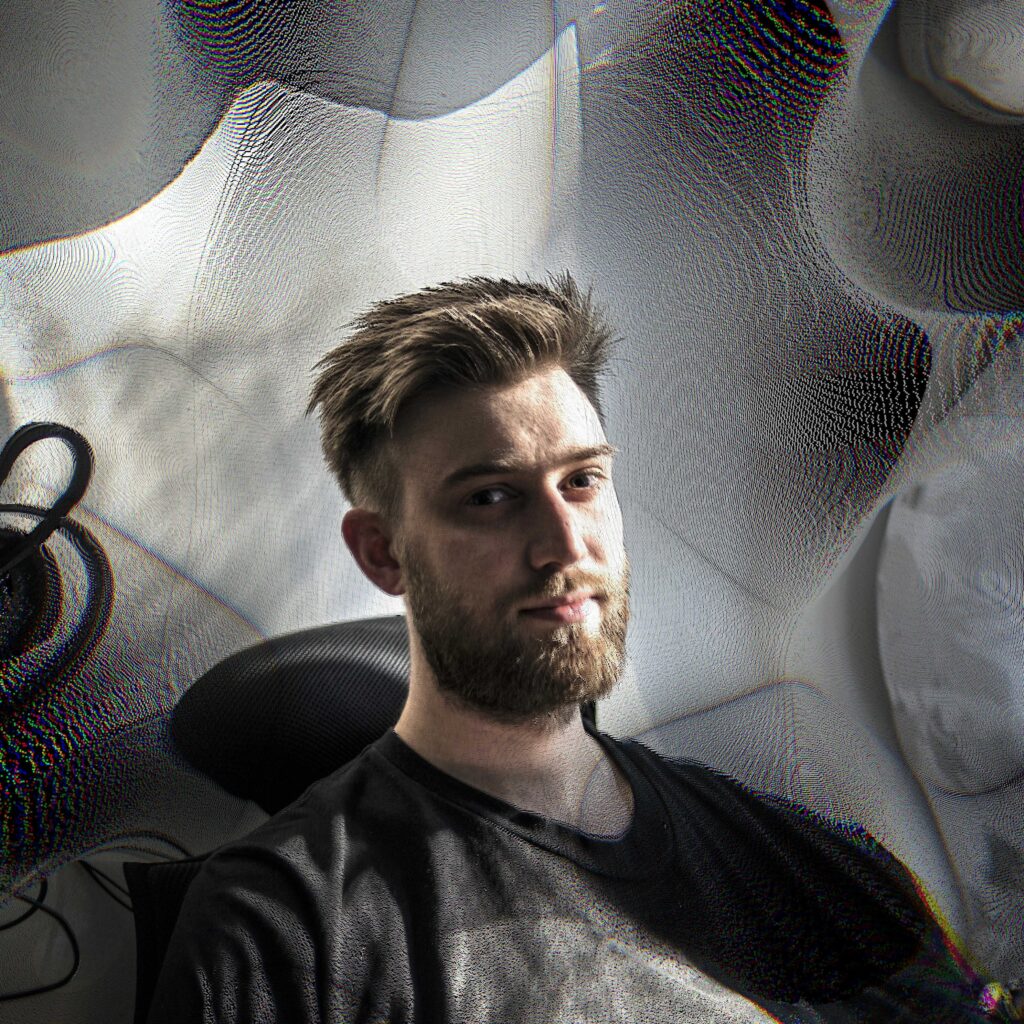
Photo: Kryštof Brůha
